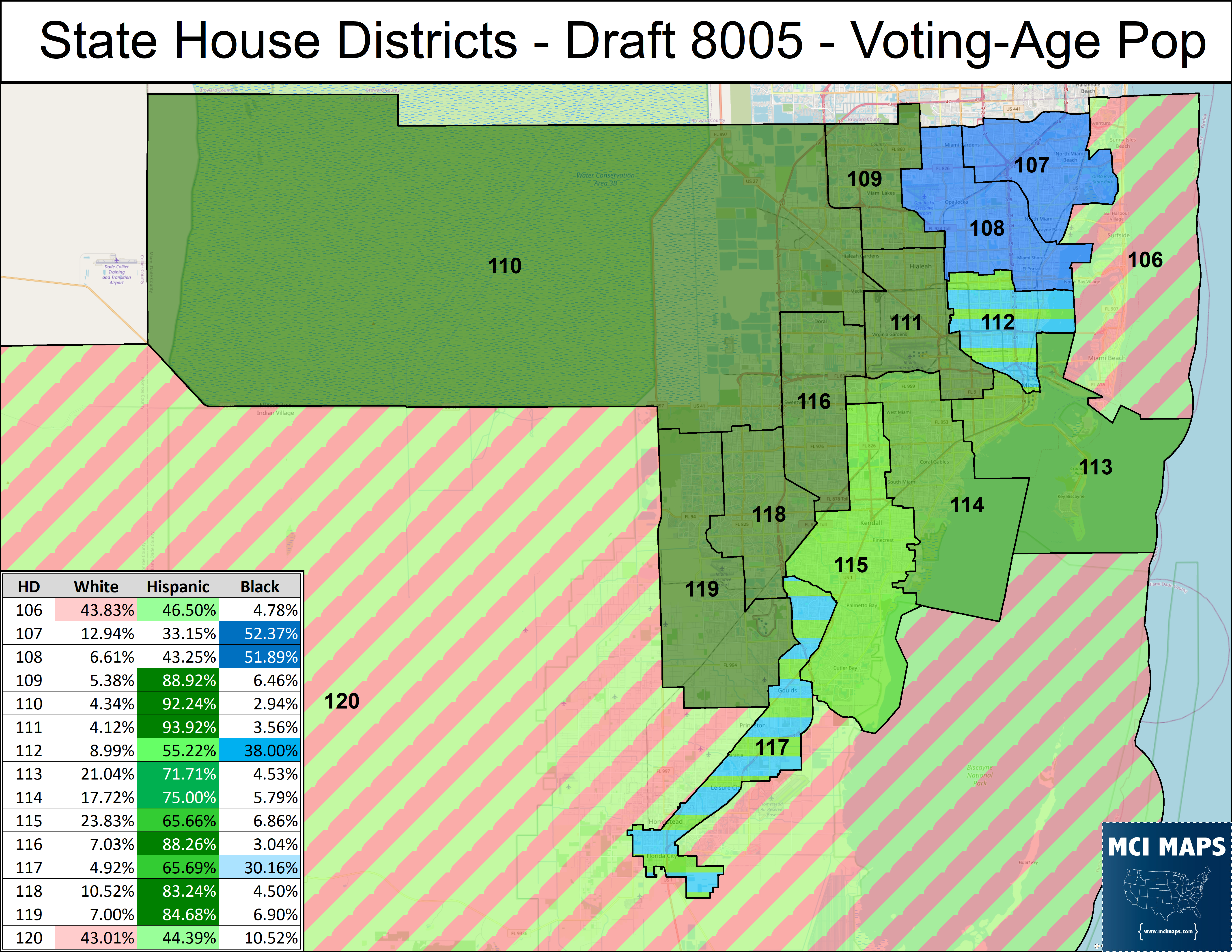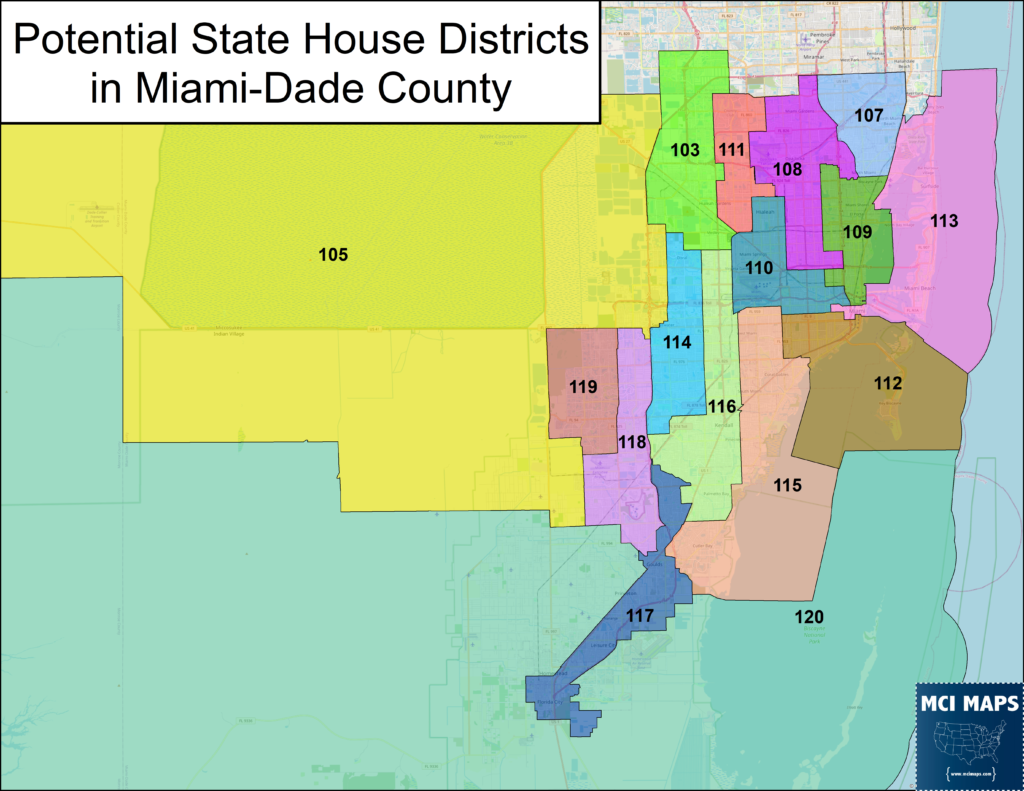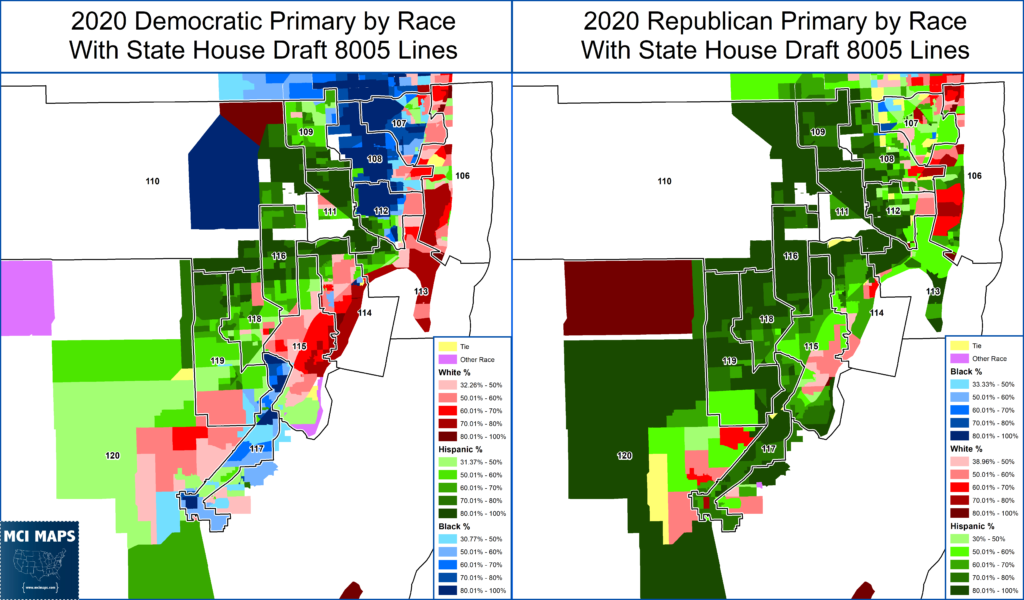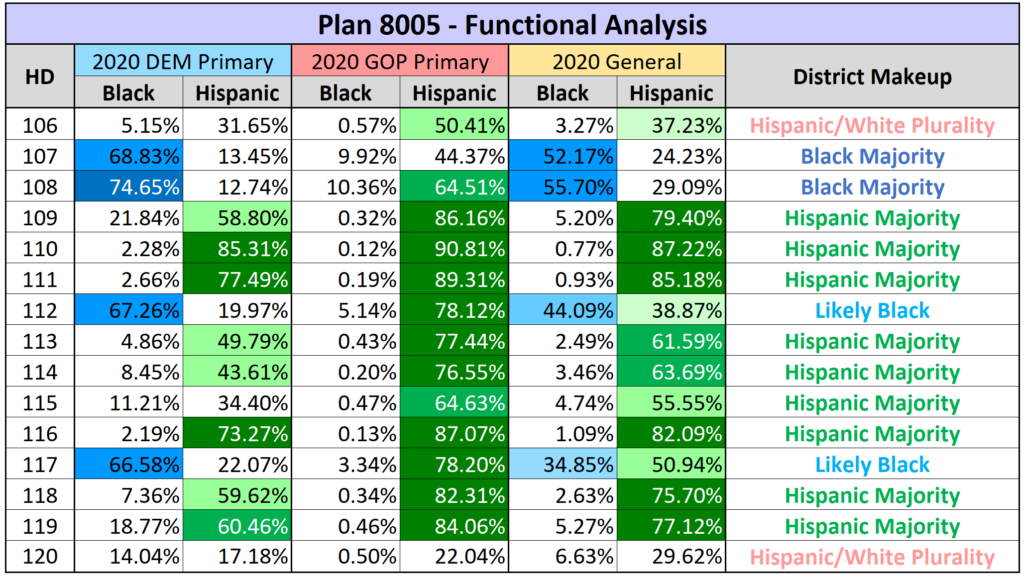This week marks article #8 in my series on redistricting possibilities across Florida. Each week I will look at an area of Florida to discuss redistricting implication.
Series Explainer
The goal of this series is to take a look at different areas in Florida and see how the legislative lines may end up. These articles will focus on how lawmakers may draw districts to accommodate changing populations. I will talk about different areas, what mandates (namely minority representation) they have, and what might need to happen due to population changes. I will also, at times, examine what efforts to gerrymander a region will look like. After the 2012 gerrymandering was discovered by a Florida Court, I believe it is appropriate to treat legislative intent with some healthy skepticism. “Fair maps” can – at times – be in the eye of the beholder, but the goal will be to identify what would likely be partisan decisions by lawmakers.
I highly recommending reading my History of Florida Redistricting series – as many mandates and norms we have in our maps are a product of that history. Prerequisite reading is absolutely my 2022 Primer Article – which covers which districts are under-populated and what the racial benchmarks are.
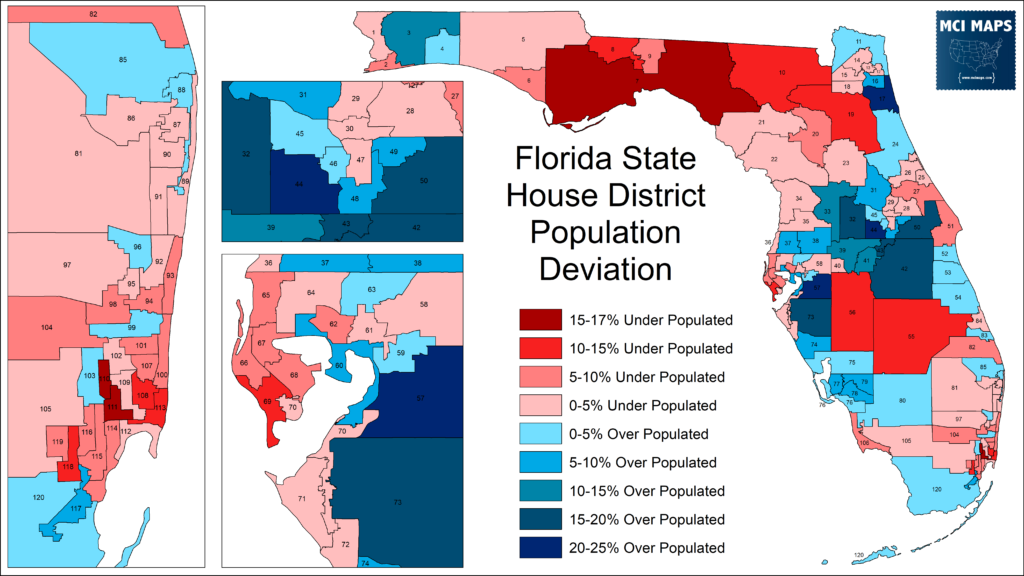

The full spreadsheet of district stats – including population and racial makeup – can be found here.
An important glossary to remember:
- BVAP = Black Voting-Age population
- HVAP = Hispanic Voting-Age Population
- Functional Analysis = using political turnout data to confirm minority performance in a district. Utilizing both general election and primary election performance for parties and racial groups.
Lets continue this series by looking at the southeast Florida state senate region!
Update! State House Maps Released
Over the last few weeks, we started seeing redistricting drafts emerge from the state senate. On November 29th, the State House released their first draft maps. I discussed the gerrymandering of the Congressional map in this substack post. For this article, we are discussing the state house plans.
Both plans give the GOP a decent advantage in the chamber. Biden won just 50/120 districts in plan 8005, while he got 52/120 in plan 8007.

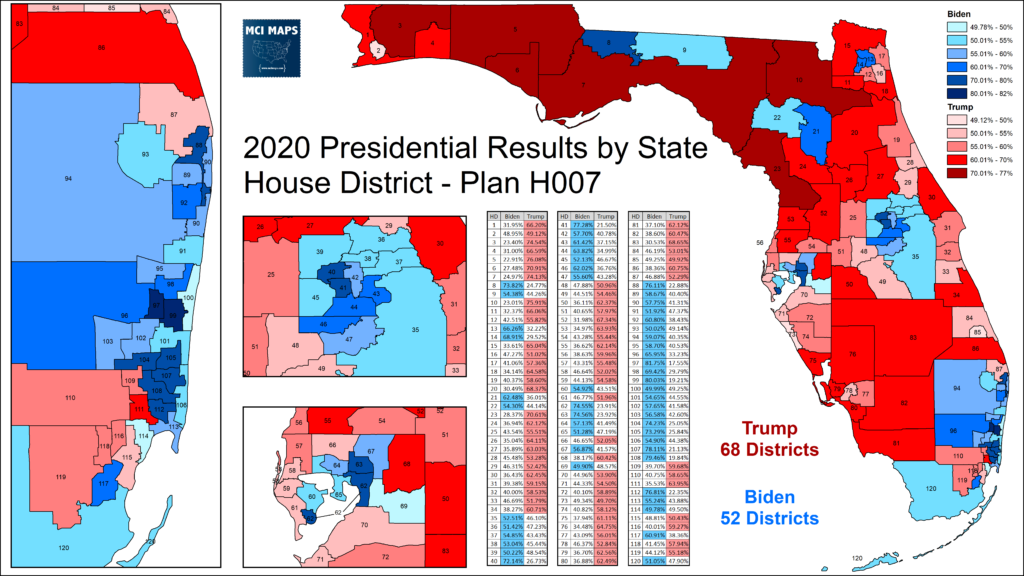
Biden did especially poor due to his collapse with Hispanic voters. In the races for Governor and Senator from 2018, the breakdowns were closer.
The plans do give Republicans key advantages, namely with Democrats winning several very narrow races while the GOP has fewer “at risk” seats. Democrats do get new districts, especially around Orlando, thanks to the massive population growth in the region.
Plan 8005 is a more aggressive plan in different parts of the state; though there is some trade-off in different regions. I will be going through multiple regions of the state over multiple articles; examining what these drafts (and any future drafts) are doing.
This article will cover the plans for Miami-Dade.
The State House Plans for Miami-Dade
An Under-populated region
In my article on the Broward State Senate lines, I acknowledged the tricky situation mapmakers were in when it came to Southeast Florida. As the over-under maps earlier in this article highlight, the region is drastically under-populated and districts must expand to adhere to the population deviation rules. This is especially tricky since many districts in the area are minority-performing seats. The whole region was set to lose 1 or 2 house seats, meaning some districts would be heavily reshaped.
The two state house drafts for Miami-Dade are below. The maps only highlight districts entirely within Miami-Dade; with the exception of 120, which includes south Dade and all of the Florida keys.
Both plans have the same district borders for seats 107, 108, 106, 109, and 112. The plans have 9 solidly Hispanic majority districts, two seats divided between white and Hispanic voters, two majority-black districts, and two districts divided between black and Hispanic voters. A note, HD117 is a black-performing district, which we will get into further down the article.
I laid out how these districts compare with the current lines. One technical note, the current Miami-Dade table doesn’t include HD102 (a black district), which is evenly divide between Broward and Dade in the 2012 map. Current plans have it all in Broward.
The latest plans show a reduction in Miami-Dade’s power. The county is essentially down two districts, both of which were majority-Hispanic. This is where the definition of retrogression, which I covered in my article on the 2012 redistricting process, becomes important. Retrogression means a reduction in the electoral power of minority voters. Hispanics in Miami-Dade may argue their influence is being reduced with these new plans. The legislature is likely to counter with HD106 (a successor to the current HD100) is now plurality Hispanic, and Broward now has a majority-Hispanic seat. In addition to new Hispanic districts in Orlando, the map does have an increase in minority districts. This is where region vs state can arise. What is likely to bolster the legislature’s case is the fact that the region was under-populated; and one-person, one vote is the top criteria.
Alternative Lines
Before the legislature released its drafts, I was working on some lines of my own. While working on these plans, I was eager to maintain the same number of minority districts in Miami-Dade. This was very rough considering the population declines. The best I could create was below.
This does, on paper, maintain the 11 Hispanic districts. However, that 11 (which already leaves out HD117) is fuzzy. First, HD113 could still perform as a white district due to turnout and registration rates. In addition, my HD105 not only continues current HD105’s Dade-Collier lines, but it also goes into Hendry County as well.
District 105, in my plan, would have just about half its voting power in Miami-Dade, the other half in Collier and Hendry. In addition, its primary voting makeups would be at best 50% Hispanic. Not exactly a solid district, nor just a Dade seat.
Another important factor in deciding these lines is not just to reach a certain voting-age population threshold. Especially in Miami-Dade, functional analysis is critical.
The Importance of Functional Analysis in Dade
Over the court of my redistricting articles, I have talked at great length about “functional analysis.” This is the process of using political data to confirm the minority performance in a district. In Florida, this often means looking at the racial makeup of voter registration and election turnout. Measuring the racial makeup of primaries and general elections helps the map-makers be sure a racial group will have the power to elect a candidate of their choice. This is especially critical in areas with high non-citizen populations. A prime example of this is Hendry County; which is majority-Hispanic in the census but majority-white in voter registration. The reason? This is the sugarcane fields, and hence there is a large number of migrant workers camps. I delve into local Hendry politics and redistricting in this article.
While Miami-Dade isn’t a big farm territory these days, it also has a sizeable non-citizen population. I talked about Miami-Dade’s history as a refugee haven; a trend that has not stopped to this day. The story of Miami-Dade is heavily influenced by immigration into the county from Latin America and the growth of generations in the region. This means minority district performance must be judged with political data. I’ve talked about the need for Hispanic districts in Dade to have super-majority Hispanic VAPs in order to ensure they perform. These days, functional analysis gives us a much easier way to verify performance.
Primary Election Analysis
In past articles, I’ve focused heavily on Democratic primaries for determining if a seat is a minority district. This is because most regions of the state, the minority districts are Democratic. In those cases, a Democratic primary is the critical piece of information. If a seat is solidly Democratic, and 55% black in a Democratic primary, the seat is likely an African-American district. In Miami-Dade, however, both parties are competitive in the Hispanic districts, and Republicans have the edge in many. For Miami-Dade, we look at both primaries.
As an example, here is the racial makeup of the Democratic and Republican primaries for the Miami-Dade house plans.
The easy thing to get out of these maps is that the GOP primaries are overwhelmingly Hispanic, while Democratic primaries are more diverse. Below I break down the GOP and DEM primaries, as well as the 2020 general election, by race. These tables include a general characterization of where each district stands when it comes to minority performance.
The functional analysis indicates that four districts are likely African-American, nine are Hispanic, and two are divided between white and Hispanic voters. All of the Hispanic districts have solidly Hispanic primaries. Some Democratic primaries are much less Hispanic (like HD115). 115 is also a competitive seat, so why are we sure it’s likely to be Hispanic? This issue came up in the 2015 redistricting, and its important political context. Since the seat is solidly Hispanic in the general elections, it would be foolish for Democrats to put up a non-Hispanic candidate against a Hispanic Republican. Democrats, would be incentivized to ensure they nominate a Hispanic democrat. This has played itself out before.
District 117 Example
HD117 is the best example of the importance of functional analysis. On paper it would seem HD117 is solidly Hispanic. What makes it a black-access district is the fact that its Democratic primary is majority-black. District 117 has large numbers of Democratic-leaning Hispanics who are not nearly as conservative as the Cuban-heavy communities of Northern Dade. As a result, 117 is a deep-blue district under all plans. African-American nominees have won this district in all its forms for years. In this district, racial makeup of candidates in the general election matters less. Further north in the county, especially in seats where the partisan breakdown is close, it can matter a great deal more.
This highlights why looking outside of just the voting-age population is critical for understanding how a district is likely to perform.
State House Data Issues
One topic that is gaining a good deal of attention in the last week or so is that the state house seems to be minimizing functional analysis much more than the state senate. While the state house does provide the racial data I cited above, there are other issues and data points they seem to not be considering.
Limited Functional Analysis Data
This issue was covered very well and in detail by the Jax Tributary – so I will only summarize here. The main issue here is that while the legislature is providing racial makeup of past elections, it does not include other critical redistricting points. One of the most critical is data on racially polarized voting in the area. This comes up in the famous Gingles Supreme Court Case. One of the factors that case laid out for redistricting was how racially polarized elections were. Three key criteria were set up by this case for determining the drawing of minority districts.
- The racial/language minority is large enough and compact enough to make up a majority of a single member district
- The minority group is politically cohesive (aka they can/do vote as a block)
- The majority racial block often votes as a unit to deny minority candidates victory in elections.
While the racial voting data is available, there is no supplemental data to look at polarized voting history. There are regions of Florida with heavily racially polarized voting, while other areas see much more cross-over support. The other major issue is a minority group’s cohesion in voting. In my North Florida article, I cited a 55% African-American primary district as to perform as an African-American seat. This is because the data and election history indicate African-Americans can united around a candidate and that the areas diversifying suburbs did not engage in serious racially polarized voting (aka white voters don’t instinctively vote against a minority candidate). However, in other communities this may not be the case.
Without this data, the true minority performance of some districts is unclear.
Lack of Hispanic Subgroups
Miami-Dade is a very, very complex and diverse area. I can absolutely compare it to New York City- in terms of how many unique communities, races, and nationalities reside there. Most critical, the Hispanic population in Miami-Dade, and all of Florida, is incredibly diverse. Simply dividing Hispanics into a few (but not nearly all) groups reveals major differences.
Miami-Dade is most known for its Cuban population, which is the largest Hispanic nationality in the county. However, it is far from the only one. Today Cubans are only around 50% of Miami-Dade’s Hispanic voters. In the 1970s they were 90%.
As Nicholas Warren, of the Florida ACLU, laid out in a detailed research paper, the era of Hispanic cohesion is past us. In the previous decades, Cubans were an overwhelming share of the Hispanic vote. This led to a uniformity of voting that rivaled African-Americans. However, an area of growing Hispanic diversity means judging Hispanic voting cohesion can be very difficult. Hispanic voters are more divided between the political parties; which drastically effects how they vote. Partisan differences also effect turnout, which I delved into in my article on Miami-Dade’s voting in 2018. Again, looking at candidate election results is critical for judging this. Redistricting cases are filled with examples of using past candidate performances for understanding racial voting patterns in a region.
Considering this growing diversity in the Hispanic population, it comes off especially strange that the latest legislative redistricting tool does not include the national origin estimates from the American Community Survey. In the 2012 and 2015 redistricting sessions, you could work on maps and see the estimated share of the Hispanic population that was Columbian, Venezuelan, Cuban, Puerto Rican, Mexican, and more. That data is now gone. As best I know, no reason for this change is given.
Disregarding the Caribbean Population
As the legislative committee met last week to go over the state house drafts, one issue stood out and generated some controversy. Chairman Cord Byrd denied the idea that Caribbean voters are a group with any protections/rights under Fair Districts.
Why is this important? Well, southeast Florida’s black community is divided between African-Americans who hold generation ties to Florida, dating back to slavery, and Caribbean black voters who descend from migrants. These two groups have been in political conflict with each-other. If a district was set up at 60% black, 40% white, but that 60% was 30% Haitian and 30% African-American; it may not qualify as a minority district if a divided black field leads to a plurality white win. In cases like this is critical to have electoral history and analysis to see how elections play out in the region. Looking at past elections to spot divides in minority communities is critical to ensure minority districts don’t just exist on paper, but in reality.
The current house lines offered make district 107 a Caribbean-access district.
This Caribbean vs African-American divide is very real, which I discussed in my Miami-Dade refugee article. We’ve seen it in local races before; whether for county commission or state legislature. We even saw it in the 2012 primary for Congressional District 24.
In the case of the house drafts, the issue of a Caribbean vs African American divide is unlikely to blunt any seat as a minority district. The disregard from the chair, however, is concerning. Yes other criteria must take precedence. As Warren points out in his research paper, the court’s willingness to get into the weeds of nationalities or sub-groups of racial blocks is limited. However, this does not mean the legislature must, or should, cast these issues aside. Again in 2012 the redistricting data included these data points. They are not made readily available this time; hence the staff mappers cannot even consider them.
Conclusion
This has been a long article, and frankly I could talk for 2x or 3x the current length. Redistricting in Miami-Dade is very complicated (if you wanna do it right). The overall story here is the legislature seems to be disregarding data points it utilized in the past – and for no reason. The courts have allowed items like nationality to be a consideration (as long as they take priority behind the Fair Districts criteria). Data on racially polarized voting is common in court documents. The data that is available, like racial makeup of voting, highlights the critical importance of functional analysis. Why the legislature isn’t incorporated additional data points is beyond me.

